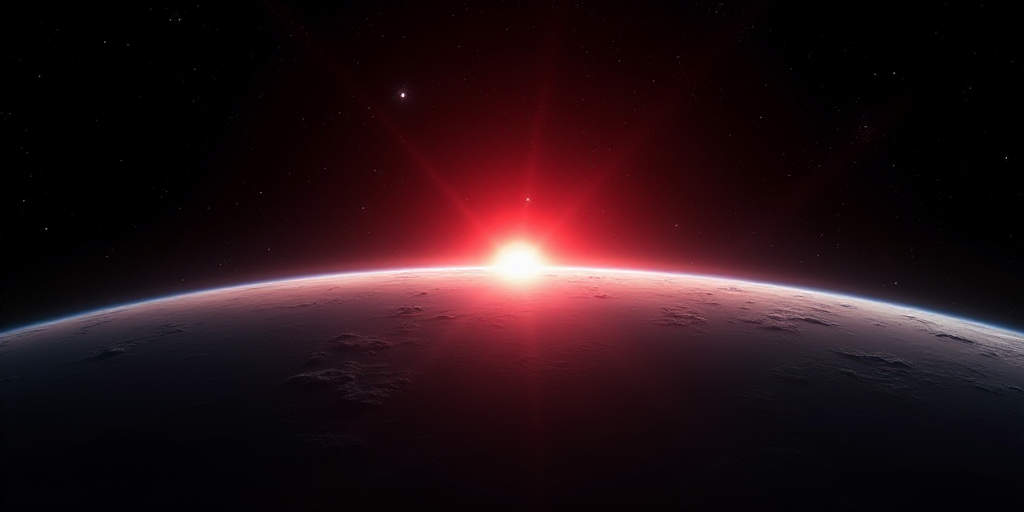Introduction
A team of British-American researchers has announced that the James Webb Space Telescope (Webb) has detected promising indications of possible life on an exoplanet outside our solar system, K2-18b. The discovery has sparked intense debate within the scientific community regarding the potential for microbial life on this oceanic world.
The Exoplanet K2-18b
K2-18b, located 124 light-years away in the Leo constellation, is a rare exoplanet that orbits within its star’s habitable zone. This means it is neither too hot nor too cold to maintain liquid water, a crucial ingredient for life as we know it.
With over eight times the mass of Earth and 2.5 times its size, K2-18b has been a focal point for astrobiological research. Its atmosphere’s composition can be determined when the planet transits its star, allowing scientists to analyze the light that has passed through the gaseous envelope.
Previous Discoveries
In 2023, the Webb Telescope detected methane and carbon dioxide in K2-18b’s atmosphere, marking the first time carbon-based molecules were found in a habitable-zone exoplanet. Additionally, the telescope detected weak signals of dimethyl sulfide (DMS), prompting researchers to focus on the planet again a year later.
Using its mid-infrared instruments, the Webb Telescope detected stronger signals of these chemical substances. However, they remain below the statistical significance threshold to confirm their scientific importance.
Chemical Indicators and Their Implications
DMS and dimethyl disulfide are chemicals produced primarily by living organisms on Earth, such as microscopic marine algae called phytoplankton. The researchers emphasize caution, stating that further observations are necessary to confirm these findings.
Nikku Madhusudhan, an astrophysicist at the University of Cambridge and lead author of the study published in The Astrophysical Journal Letters, stated that their current findings suggest “possible biological activity” beyond our solar system.
“I believe this is as close as we’ve come to observing a feature that we can attribute to life,” Madhusudhan added during a press conference.
However, external experts have raised concerns about past disputes related to this exoplanet. They argue that these chemicals could have been created through unknown, non-biological means.
Hydrogen-Rich Oceanic Planets and the Debate on Habitability
K2-18b has long been considered a prime candidate for being a “hicean” planet: an oceanic world larger than Earth with a hydrogen-rich atmosphere.
These planets are not believed to support intelligent life but could potentially harbor microbial life similar to that found in Earth’s ancient oceans billions of years ago.
Some research has questioned whether proposed hicean planets, including K2-18b, can maintain liquid water due to their proximity to their stars. Raymond Pierrehumbert, a physics planet researcher at the University of Oxford, suggests that K2-18b is too hot to support life.
Pierrehumbert believes the most plausible scenario is molten lava oceans. Sara Seager, a planetary sciences professor at MIT, recalled previous findings of water vapor in K2-18b’s atmosphere that turned out to be another gas.
Future Observations and the Search for Extraterrestrial Life
Madhusudhan estimates that only 16 to 24 additional hours of observation with the Webb Telescope are needed to confirm their findings, which could happen within the next few years.
“This could be the pivotal moment where we finally have the capability to answer the fundamental question of whether we are alone in the universe,” Madhusudhan said.
Key Questions and Answers
- What is K2-18b? K2-18b is an exoplanet located 124 light-years away in the Leo constellation. It is a rare, oceanic world within its star’s habitable zone, with over eight times the mass of Earth and 2.5 times its size.
- What chemicals were detected by the Webb Telescope? The telescope detected methane, carbon dioxide, and weak signals of dimethyl sulfide (DMS) in K2-18b’s atmosphere.
- What are the implications of these findings? While the researchers emphasize caution and the need for further observations, these findings suggest possible biological activity beyond our solar system.
- Are there concerns about these findings? Some experts have raised concerns that the chemicals could have non-biological origins, highlighting the need for more observations.
- What is a hicean planet? A hicean planet is an oceanic world larger than Earth with a hydrogen-rich atmosphere, not believed to support intelligent life but potentially harboring microbial life.
- What are the future prospects for detecting extraterrestrial life? With additional observations using the Webb Telescope and future telescopes, humanity may discover extraterrestrial life much sooner than expected.






